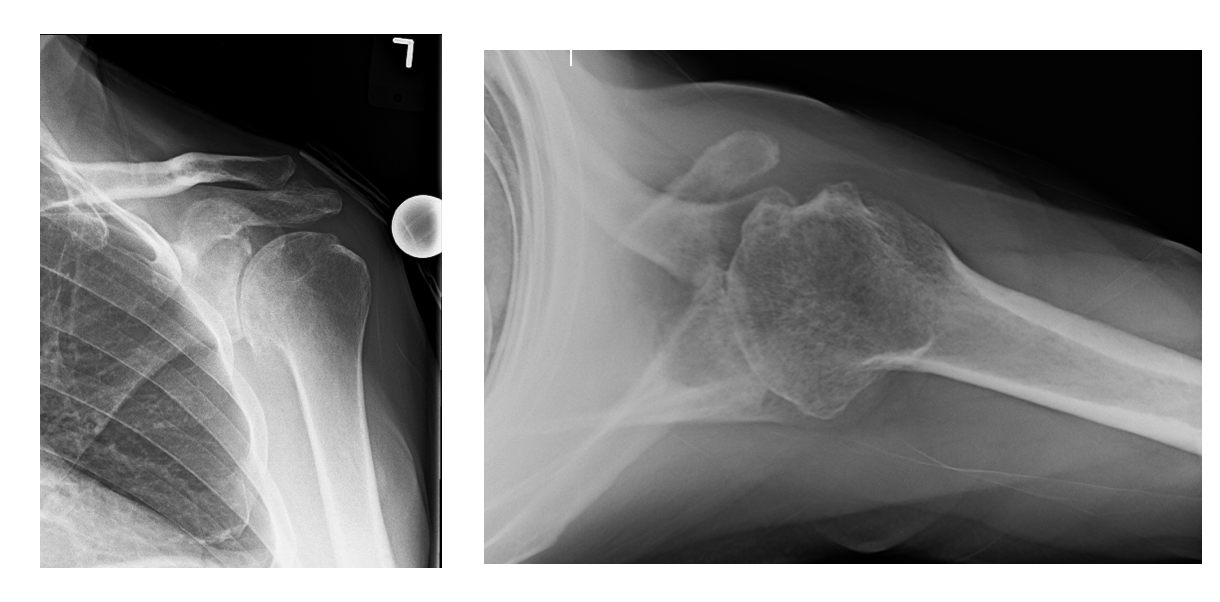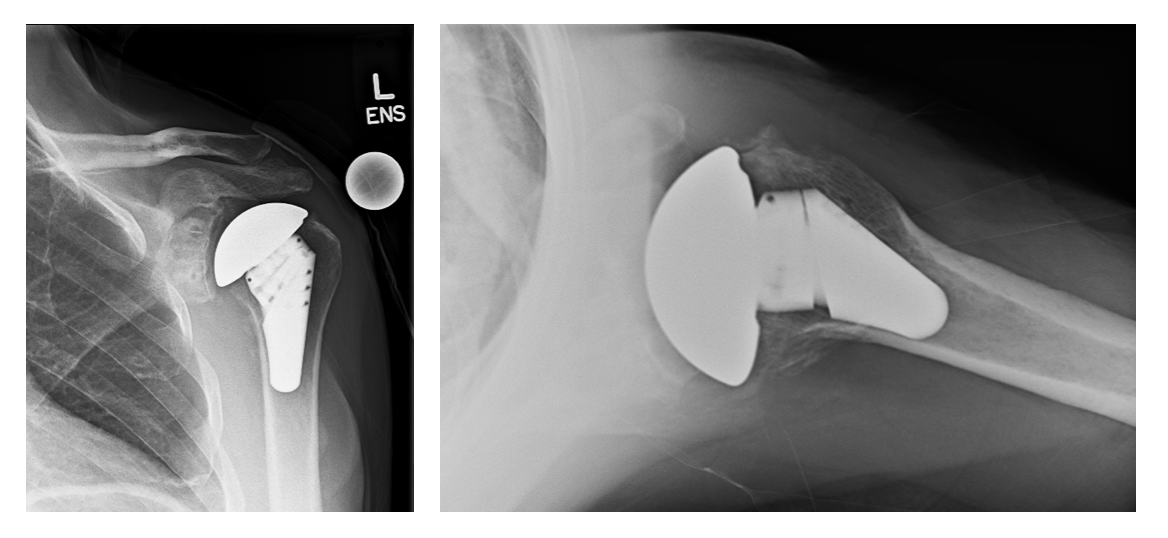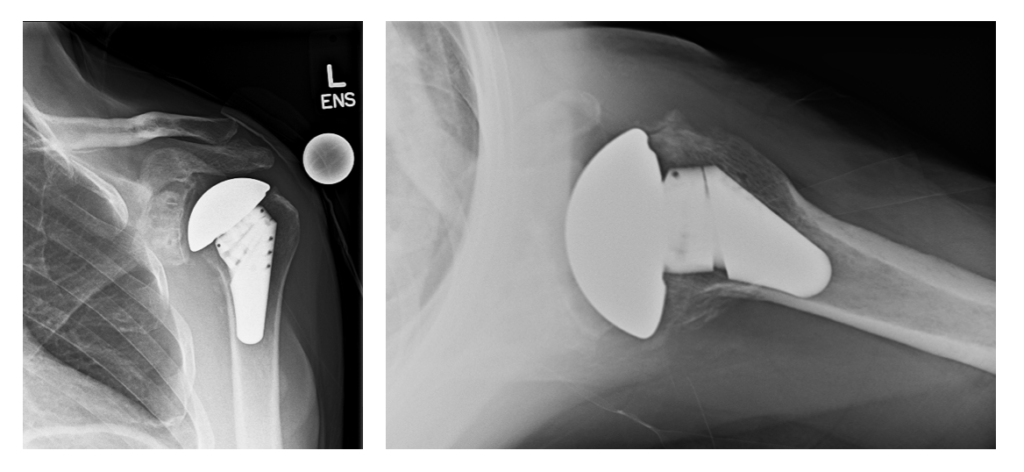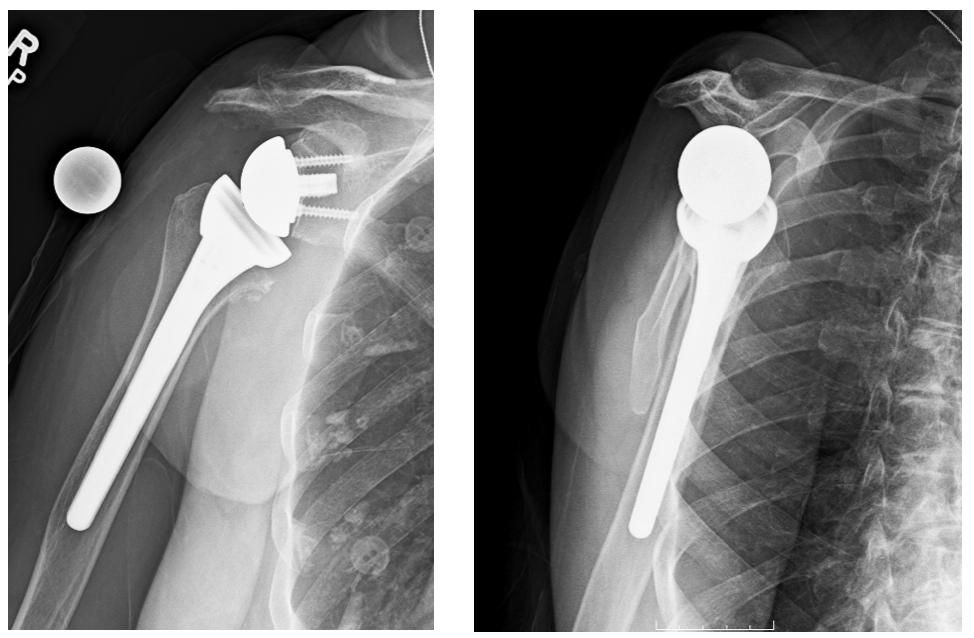Shoulder Replacement Overview
The shoulder is a ball and socket joint and cartilage is the protective lining within the joint. Working together, they allow fluid range of motion. Shoulder arthritis occurs when the cartilage begins to wear away. Symptoms of shoulder arthritis includes persistent pain, inflammation and swelling. Patients suffering from advanced shoulder arthritis that have tried conservative shoulder treatments such as medication, physical therapy and in some cases, arthroscopic surgery—without relief—may be candidates for anatomic shoulder replacement surgery.
Dr. Peter Millett has created an alternative for young active patients with advanced osteoarthritis. The comprehensive arthroscopic management (CAM) procedure is an innovative treatment technique that delays total shoulder replacement. This minimally invasive procedure preserves the shoulder joint, decreases pain, improves function, and delays the need for shoulder replacement surgery.
Treatment Options for Shoulder Arthritis
Surgical Treatment
Anatomic Total Shoulder Replacement
Anatomic total shoulder replacement surgery is a joint replacement procedure. Typically, Dr. Millett will suggest this treatment for patients who are suffering form extreme arthritic conditions. Anatomic total shoulder replacement surgery replaces the damaged bone and cartilage with a plastic or metal implant. A metal ball is used to replace the humeral head, while a polyethylene cup becomes the replacement of the glenoid socket. The indication for a total shoulder replacement is pain that will not imporve with non-operative treatment. Although arthritis is usually the primary condition that leads to a total shoulder replacement surgery, other abnormalities may also benefit from the procedure such as severe fractures and other degenerative disorders. The primary goal of total shoulder replacement surgery is to alleviate pain while improving motion, strength and function.
Arthrex Shoulder Arthroplasty with Virtual Implant Positioning™ (VIP) Preoperative Planning System
One of the shoulder replacement options Dr. Millett offers is the Arthrex shoulder arthroplasty with virtual implant positioning (VIP) – a preoperative planning system. The VIP™ system, is redefining total shoulder arthroplasty with patient-specific preoperative planning and reusable instrumentation. This technology helps Dr. Millett select and place shoulder implants with greater precision and reproducibility. This leads to improved outcomes for his patients with less pain, more range of motion and a better over-all function of the joint to give patients a better quality of life.
You can download the patient brochure here: virtual-implant-positioning-vip-preoperative-planning-system
Reverse Shoulder Replacement
A relatively new technique is a reverse shoulder replacement. This technique was designed for individuals who are not candidates for a total shoulder replacement because of two underlying conditions—a torn rotator cuff and shoulder arthritis (sometimes caused by the torn rotator cuff). Similar to a total shoulder replacement, the reverse shoulder replacement also uses a metal or plastic ball and socket device, but the ball is placed on the shoulder blade, and the socket is placed on top of the arm bone. The name "reverse shoulder replacement" was given to this procedure because it is the reverse of the body's normal anatomy.
Joint Preservation and Cartilage Restoration Procedures for the Shoulder (CAM Procedure)
An alternative to arthroscopic surgery is joint preservation and cartilage restoration for the shoulder. In cartilage restoration, the shoulder joint tissue is, in essence, regrown or transplanted from donated tissue. For some patients, arthroscopy only provides temporary relief because of other underlying factors and damage to the cartilage. In cartilage restoration of the shoulder, the injured tissue is replaced with healthy cartilage from either the patient's own body or a donor cadaver which biologically restores the joint. This procedure, while less common, has positive results for patients who are candidates.
After Shoulder Arthritis Surgery
Therapy may or may not begin immediately upon leaving the hospital after your shoulder replacement surgery. You will be instructed if you can do pendulum exercises on your own and you may see a therapist in the hospital for therapy. This depends on the type of surgery you have. You can use your arm from the elbow down but no active motion of the shoulder until ordered by us. We will review this with you on your first visit after surgery.
For more information on shoulder arthritis, or to determine if you are a candidate for shoulder replacement surgery, please contact the office of Dr. Peter Millett.
Related Articles
Am I Candidate for Shoulder Replacement Surgery?
What is my Alternative to Shoulder Replacement Surgery?
What are my Treatment Options for Shoulder Osteoarthritis?
What Options Exist for Young Patients with Osteoarthritis of the Shoulder?





